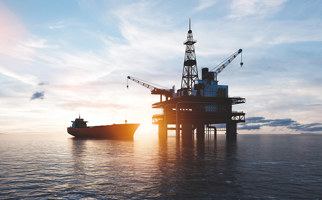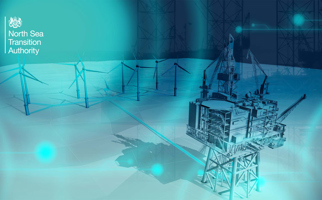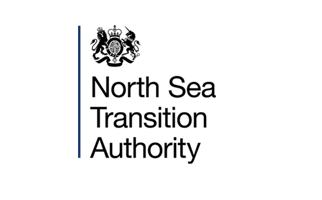
A lot can change in a year. This may seem like a trite observation, but anyone with even a passing interest in the UK’s offshore energy sector, whether investor or protestor, will tell you it is also undeniably true.
Twelve months ago, the North Sea oil and gas industry appeared to have reached a nadir in the popularity stakes.
The much-heralded COP26 in Glasgow, which largely excluded fossil fuels companies from the discussion, was still fresh in people’s minds. The future of the Cambo and Rosebank projects had received a great deal of publicity and the debate around the energy transition and climate change was growing ever more polarised. Protests were becoming more frequent and disruptive – a portent of what was to come.
Government, industry and indeed ourselves at the North Sea Transition Authority (NSTA) were in the midst of judicial reviews into decisions made on North Sea projects and strategies. However, the road ahead for the energy industry was about to be thrown another curve ball. Well before Vladimir Putin ordered his illegal invasion of Ukraine in late February, gas prices had already become worryingly high and dozens of less resilient energy suppliers were driven to the wall.
The war in Ukraine – and the shutting of the gas taps from Russia – has made the squeeze on supplies in Europe much worse and UK households are having to cope with severe pressures on their finances.
At the NSTA we have long said renewable power, in its many forms, is the clear, long-term answer to the energy supply crunch. We need more wind, solar, hydrogen and other low-carbon solutions as quickly as possible. But as much as we might wish it, these technologies are not yet ready to consistently shoulder the burden of keeping the lights on, homes heated and businesses running in the UK. We know that oil and gas currently meet 75% of the UK’s energy demand and we will continue to need them for years to come, while green power and storage projects ramp up.
So what are we doing about it?
Well, we know that the more oil and gas we can get from domestic projects the better, which is why new, cleaner fields are a good thing, not a bad one. Consuming UK North Sea gas has less than half the footprint of imported LNG. It also supports many tens of thousands of jobs and generates tax revenues for government. The industry is forecast to contribute £14.9 billion in tax receipts during the 2022-23 financial year.
Gas production from our basin is up by about a quarter on 2021 levels and the NSTA is working closely with industry and government to progress new projects in support of energy security, including through the issuing of new, fast-tracked licences, expected in the first half of 2023.
However, we are not letting industry take its eye off the ball on emissions. The NSTA is steadfastly holding the sector to account on commitments made in the 2021 North Sea Transition Deal with government.
There has been good news to report. Emissions from North Sea oil and gas production activities dropped by more than a fifth between 2018-21. Last year, flaring hit a record low, having been cut by 20%, a reduction equivalent to the annual gas demand of 130,000 UK homes. We aren’t afraid to use our regulatory powers to ensure the right outcomes, and yesterday we announced £215,000 of fines that had been issued to companies that we found to have breached emissions rules.
Early reduction targets are well within reach, but more needs to be done if the goal of halving emissions by 2030 is to be achieved. For this to happen, industry needs to make inroads on electrification, which involves powering platforms with clean electricity, instead of gas or diesel. Just a few weeks ago, I was encouraged to see bp, Equinor and Ithaca Energy enter into a pact – in the presence of Energy and Climate Change Minister Graham Stuart – to explore options for electrifying installations west of Shetland. The NSTA stands ready to support the trio as they move forward with their plans.
I am also excited that the NSTA will soon award licences via the UK’s first ever carbon storage licensing round, which attracted 26 applications from 19 companies covering 13 areas of the UK Continental Shelf. We predict that successful bidders could start injecting CO2 into North Sea reservoirs by 2027 and go on to make a substantial contribution to government storage targets.
I know that some groups and individuals won’t be won over by these arguments, but it is short sighted of them to ignore the work which is being done in the waters off our shores to boost energy security, while transitioning to net zero.
There are many complex issues to work through in the next year, not least the issues around investment to support not only the transition but also energy security. There are regulatory knots that must be unpicked, parliamentary hoops to jump through, but we must keep our eye on the prize. We must recognise the huge value of the UK North Sea, which remains the jewel in the crown of our country’s energy system. It enables us to not only produce energy from a wide range of sources, but also to store vast amounts of CO2. By combining carbon storage, hydrogen, wind, wave and tidal, the basin can take the UK 60% of the way towards its net zero 2050 goal. There is no other industry that can come close.
Stuart Payne is incoming CEO of the North Sea Transition Authority, which regulates the oil and gas and carbon storage industries
This op-ed originally appeared in The Telegraph here.


